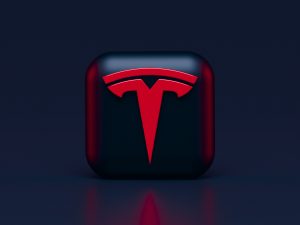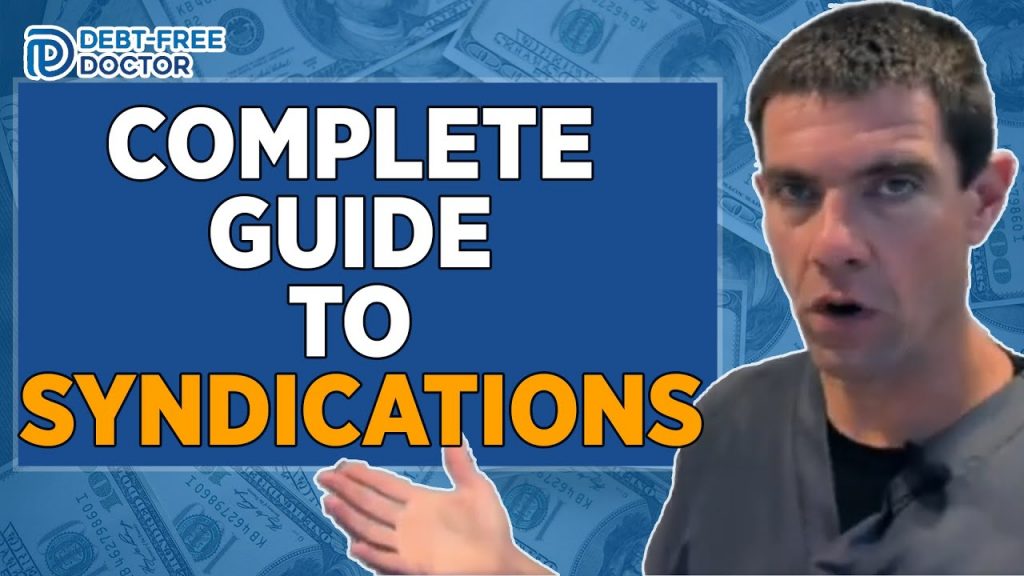Buy Borrow Die – How Elon Musk Pays Less Taxes Than Doctors
More than likely, if you’re a high income earner, then it’s safe to say that you pay the federal government a boatload of taxes each year.
But how is it that the richest Americans (i.e. Elon Musk, Jeff Bezos, Warren Buffett, etc.) can get away with paying next to zero in taxes? Sometimes less than most doctors’ tax rate?
Actually, there’s a few reasons as they know how to take advantage of the tax law.
One way they accomplish this is exactly what we will discuss in this article using the Buy, Borrow, Die Strategy.
(*Disclaimer: I’m a periodontist and real estate investor, not a financial advisor or attorney. Please don’t take this as financial or legal advice.)
Don’t Miss Any Updates. Each week I’ll send you advice on how to reach financial independence with passive income from real estate.
Sign up for my newsletterWhat is the Buy, Borrow, Die Strategy?
In the 1990’s, University of Southern California Law professor Edward McCaffery, developed the concept of “buy, borrow, die”.
It explains how wealthy Americans can successfully delay, minimize, or avoid a tax liability by accessing cash without the need to sell investments.
And by not selling them, their portfolio can continue to grow without paying the capital gains taxes that would come as a consequence of selling.
Let’s look at each of the phases in more detail of how rich people play the game.
Step #1. Buy
For many billionaires, this means creating startups that become huge companies.
However, for physicians and dentists, this can also mean “save and invest,” which is something that you should already be doing…buying assets that APPRECIATE in value.
Examples are real estate, portfolios of stocks, mutual funds, collectibles, starting a business, etc.
When you own an asset, you’re not required to pay any tax unless you receive income from the asset or sell it and recognize a gain.
Real estate is great for this as:
- it tends to go up in value over time
- it’s not volatile
- it can be depreciated, which reduces income tax
- it’s easily accepted as collateral
My favorite real estate investments are passive syndications.
See the video for more information:
The basis behind doing this is to capitalize on the increase in the value of the assets happening during the hold period.
Take commercial properties, for example. Historically, real estate appreciates in value year over year and is also a way to hedge against rising inflation or stock market volatility.
Another plus is all of the fantastic tax benefits that come along with property ownership (including syndications). One of the biggest is depreciation, which allows you to write off property over a period of time, making it tax-deductible.
The point of investing in this manner is acquiring assets that generate passive income and grow in value on a tax-deferred basis.
The goal is to buy enough appreciating assets to not have to work for income and never sell them.
Step #2. Borrow
‘Ordinary people don’t think about debt the way billionaires think about debt.’ – USC law professor Ed McCaffery
The next step, after you’ve invested in assets, is to borrow against them using said assets as collateral for a loan (i.e., securities-based loans).
You might be asking, “Why would I borrow against something I want to increase in value forever?”
Good question.
The wealthy understand that leveraging assets as collateral allows them to borrow money while also preserving the value of the asset portfolio. Loan proceeds have never been taxable under our tax code.
In essence, they avoid selling and paying capital gain tax, which increases the value. Now, you’re starting to realize how wealthy people operate.
But wait, there’s more!
Not only can you avoid paying capital gains tax but the loan proceeds are NOT counted as taxable income. Basically, you’re able to obtain a double tax benefit when implementing this strategy.
In a nutshell, the more they can borrow, the longer they can hold appreciating assets. And the longer they hold, the bigger the tax savings.
Example
Let’s use an example of how this plays out.
Several years ago, Dr. A bought Amazon stock for $100 (he wished he’d bought more), and it grew to $1,000 today.
If he decided to sell, he’d pay long-term capital gains of $900 (plus state income taxes).
So if he needs cash for another type of investment but wants to avoid selling stock and incurring taxes, he can borrow $300 against the stock to make the new investment.
In this way, the original stock value continues to appreciate and he avoids a high taxable event that comes along with selling securities.
Step #3. Die
“To whom much is given, much will be required.” (Luke 12:48)
The buy-borrow-die strategy benefits not only those that use it but also their heirs. I understand that nobody likes to think about death. But it’s a fact of life; we’re all going to die.
And the wealthy understand how important estate planning is and are focused on preserving their assets when they pass on. Because there’s more assets for your heirs if you can reduce or avoid estate taxes.
Your heirs get a new basis (step-up) when you die. The basis is what you originally paid for an investment.
For more information about the stepped-up cost basis, check out this video:
Step #4. Repeat
When your heirs sell the assets, they can benefit from the step-up in basis and receive the cash while paying no tax.
The cycle can be repeated indefinitely, allowing families to generate massive amounts of wealth and pass that wealth down to their heirs tax-free.
Let’s return to the above example with Dr. A. Let’s assume he holds on to the Amazon stock until he passes on and is now worth $5,000. His heirs receive the stepped-up basis to $5,000, which is the value of the stock at his death.
In theory, his heirs could sell it for $5,000 and pay ZERO in taxes, thus permanently avoiding capital gains taxes on the $4,900 gain or 98% of the value. But let’s not forget about the $300 loan he originally took out.
If his Amazon stock continued to appreciate, he could have used proceeds to repay the loan in full. But maybe he elected to continue paying interest, and the $300 principal was still due at the time of this death.
In this situation, his heirs could sell a small fraction of the $5,000 stock to pay off the loan, and they’d not pay any tax on the proceeds up to $5,000.
Join the Passive Investors CircleWhat’s The Catch?
There’s NO catch.
You simply need your assets to continue to grow and appreciate in value. And then you have to die for the strategy to go into effect.
The huge advantage is that instead of selling assets, you can borrow against them and pay back interest. And the kicker is avoiding paying the government capital gains tax.
I understand there are a few more hoops to jump through due to the loan, but it’s not hard to borrow against your stock or real estate portfolio.
Or you can always settle for the easy way…selling your asset, reporting the sale on your tax bill, but then having to pay taxes.
Benefits of Using the Strategy
Here are 6 benefits of using the buy-borrow-die strategy:
#1. Avoid paying tax on appreciation of asset
The main reason the wealthy use this strategy is to avoid paying tax on the appreciation in the value of the asset.
This is accomplished as you didn’t sell the asset. And because of this, you didn’t recognize a gain in the eyes of the IRS.
#2. Access to liquidity
You’re able to access cash from the asset’s appreciating value, which could be considered “cashing out” even though you didn’t sell anything.
And remember, because of doing this, you avoid a tax burden on the gain.
#3. Still participate in the upside of investment
Because you never sold the asset, you’ll still get the benefit of any further increase in value due to obtaining continued ownership.
This means you get to access liquidity from the asset while still benefiting from any upside gains that could happen in the future.
#4. Be your own bank
If you borrow against one asset then you can turn around and invest that into a second asset.
This approach allows you to be your own bank.
For example, let’s say you want to start a new business. Instead of getting a bank loan, you could lend yourself money by taking a margin loan against your assets. In this situation, you’re both the borrower and the lender.
#5. Diversification of investments
Using a loan to take cash out of an investment allows you to take some chips off the table.
You can then turn around and reinvest that money into another asset to further diversify your portfolio.
#6. Asset protection
A lender usually has senior priority for an asset with debt. This makes debt a great tool for asset protection.
Most people avoid using others that have high amounts of debt.
For example, you may own $2m worth of rental property. But if you only have 10% of equity with a $1.9m mortgage, that limits the amount a potential plaintiff could recover from you.
If you’re sued and forced to sell, the bank gets their $1,900,000 first, leaving the plaintiff with only $100,000.
Using The “Buy, Borrow, Die” Strategy
Let’s take a look at four ways doctors and other high-income earners can use this strategy:
#1. HELOCs/second mortgages
This is one of the more popular concepts in that you can borrow against your house via a Home Equity Line of Credit (HELOC) or second mortgage to pay for an expense versus selling your home.
This is typically seen when individuals:
- make a down payment on the purchase of a second home
- spend on large remodel projects on an existing home
Once the funds are borrowed, you have options such as:
- pay down the loans
- pay off the loans when the house is sold
- hold onto the funds until death
#2. Portfolio loans
This strategy uses an investment portfolio as collateral instead of a home; no assets need to be sold to access cash.
In recent years, portfolio loans have been popular due to a low-interest-rate environment, and portfolio loan rates have often been even lower than mortgage rates.
#3. Cash value life insurance
Permanent life insurance is also known as cash value life insurance.
Unlike term insurance, permanent life insurance has a “cash value,” which can be borrowed against using the “buy, borrow, die” concept.
The cash values within the life insurance policy grow tax-free making them tax efficient in the accumulation phase.
Next, the loan rates on cash-value loans can be fixed when initially purchased.
For instance, if an insurance policy has a contractually guaranteed 0.25% loan rate, this means the policy owner will get a near-zero loan rate to borrow against their cash values. This can be done at any point during the time the policy is held.
These are superior to loan terms on HELOCs, second mortgages, and portfolio loans. And once you pass on, the death benefit of the policy is used to pay back the loan principal.
FAQs
1. What does the “Buy Borrow Die” strategy mean for wealthy individuals in terms of appreciating assets and unrealized gains?
The “Buy Borrow Die” strategy is a popular approach among wealthy individuals to manage appreciating assets. This tactic involves purchasing assets like a primary residence or investments that appreciate over time, borrowing against these assets at low interest rates, and then passing them on as generational wealth. These individuals can take advantage of unrealized gains without triggering capital gains taxes under the current American tax system.
2. How do rich Americans use home equity loans and wealth management advice to optimize the “Buy Borrow Die” strategy?
Rich Americans often consult with investment advisors or wealth management clients to effectively implement the “Buy Borrow Die” strategy. By taking out a home equity loan against their primary residence or other appreciating assets, they can access funds at low interest rates without selling their assets. This method allows them to retain the asset for further appreciation, avoid capital gains taxes, and potentially invest the borrowed money in other ventures, as advised by their financial planners.
3. Can you explain how the “Buy Borrow Die” strategy helps in avoiding property taxes and wealth taxes?
The “Buy Borrow Die” strategy doesn’t directly help in avoiding property taxes, as these are typically owed annually based on the property’s value. However, it can help in minimizing exposure to wealth taxes or estate taxes. By leveraging low-interest rates to borrow against their assets, wealthy individuals can avoid selling them, which would otherwise realize gains and potentially trigger higher taxes. This strategy, while complex, is often discussed by tax law professors as a legal method used by the rich to maintain and grow their wealth.
4. What insights does Warren Buffet provide about the “Buy Borrow Die” strategy, and how does it relate to the American tax system?
Warren Buffet has often spoken about the tax efficiencies in investment strategies employed by rich Americans. The “Buy Borrow Die” strategy, which he indirectly references, highlights how the American tax system can be navigated to maximize wealth preservation. By focusing on appreciating assets, leveraging unrealized gains, and understanding the intricacies of tax laws, individuals can structure a financial plan that minimizes tax liabilities while growing their wealth, a principle that Buffet himself advocates in wealth management.
Join the Passive Investors Circle




